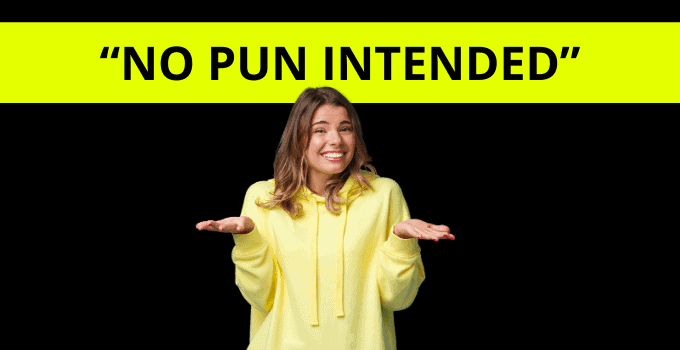The above sentence might seem trivial to you, but there is actually more to it than meets the eye. Obviously, people laugh at funny things.
Yet, there is something odd about laughter itself. We laugh before we can even speak, and it is a unique way for us to bond with other people.
Books have been written on the topic, trying to discern what makes us laugh and what function, if any, laughter plays in our lives.
Laughter is in a way a bit of a mystery to us, the same way our need to sleep is also a mystery.
Other books have tried to dissect the things that make us laugh, jokes. For instance, Sigmund Freud once wrote a book called “Jokes and Their Relation to the Unconscious.”
In the book, Freud tried to break jokes down into different categories and to figure out how each one operates on the psyche.
One of the types of jokes Freud looks into is the joke that plays on words, also known as a pun.
Today, we groan at these jokes when one of our friends makes them, and we label these jokes as dad jokes.
This is why some of us may choose to distance themselves from these types of jokes using the phrase “no pun intended.”
Let’s take a closer look at that phrase and understand what it means.
What does “no pun intended” mean?
At face value, “no pun intended” means that even though the speaker may have inadvertently created a play on words, this play was completely accidental and not intentional in any way.
Another usage is for a speaker to distance themselves from a bad pun they had made which didn’t garner any laughs. Simply put, if someone makes a pun, to which everybody groans, the speaker can sheepishly say, “no pun intended” in the hopes of backtracking a bit.
The power of the pun
Language is a fascinating creature. This is why we work so hard to create this blog, and this is also why you come to read these articles.
It is also why philosophers like Foucault and Derrida have spent their lives trying to understand its intricacies as well as its influences on culture.
Now, one of the interesting things about language is how certain words can have more than one meaning. Alternatively, sometimes, different words with different spellings can almost sound the same. These are both the birthplace of the pun.
The idea of a pun is to create a play on words, to use one word instead of another, creating an absurd sentence in a way.
Example:
“Where should I perform the dare?”
“Over here, over dare. I really don’t care.”
In the above sentence, the speaker has used the similarity in pronunciation between the words “dare” and “there” to create a pun.
With that said, puns are usually looked at with a certain sense of disdain, especially from the younger generation.
They are considered the easiest jokes to make, the low-hanging fruits if you will, which means that it doesn’t require extraordinary wit or brains to come up with a pun.
This is why a lot of people groan when they hear a “dad joke,” and it should also explain why some people might be more than happy to distance themselves from a bad pun.
How to use “no pun intended” in a sentence
Let’s look at the first case where someone doesn’t mean to make a pun, but they realize that what they have just said contains a play on words of sorts.
Example
“You want me to go out with that skinny guy over there? There’s a slim chance of that happening, no pun intended.”
Here, the speaker didn’t mean to create a play on words. They meant to use the common expression “slim chance,” yet it just so happened that they were also speaking about a skinny fellow in the same sentence.
As a result, once the speaker realized the parallelism, they sought to set the record straight by adding “no pun intended” at the end of their sentence.
On the other hand, this is what it would look like if someone said a joke, got a poor reaction, then tried to distance themselves from the joke afterward.
Person #1: “Hey, you see that nun jogging over there?”
Person #2: “Yeah, she’s probably trying to exorcise her demons.”
Person #1: No Reaction whatsoever, just stares blankly at the other person.
Person #2: “No pun intended.”
In the above example, the joke lies in the similarity between “exercise” and “exorcise.”
However, since the joke wasn’t received well, person #2 decided to distance themselves from the joke by throwing in a “no pun intended.”
What about if the pun is intended?
Well, under certain circumstances, puns are very well intended. And you can get this across nicely using the set phrase “pun intended” instead.

Hey fellow Linguaholics! It’s me, Marcel. I am the proud owner of linguaholic.com. Languages have always been my passion and I have studied Linguistics, Computational Linguistics and Sinology at the University of Zurich. It is my utmost pleasure to share with all of you guys what I know about languages and linguistics in general.

